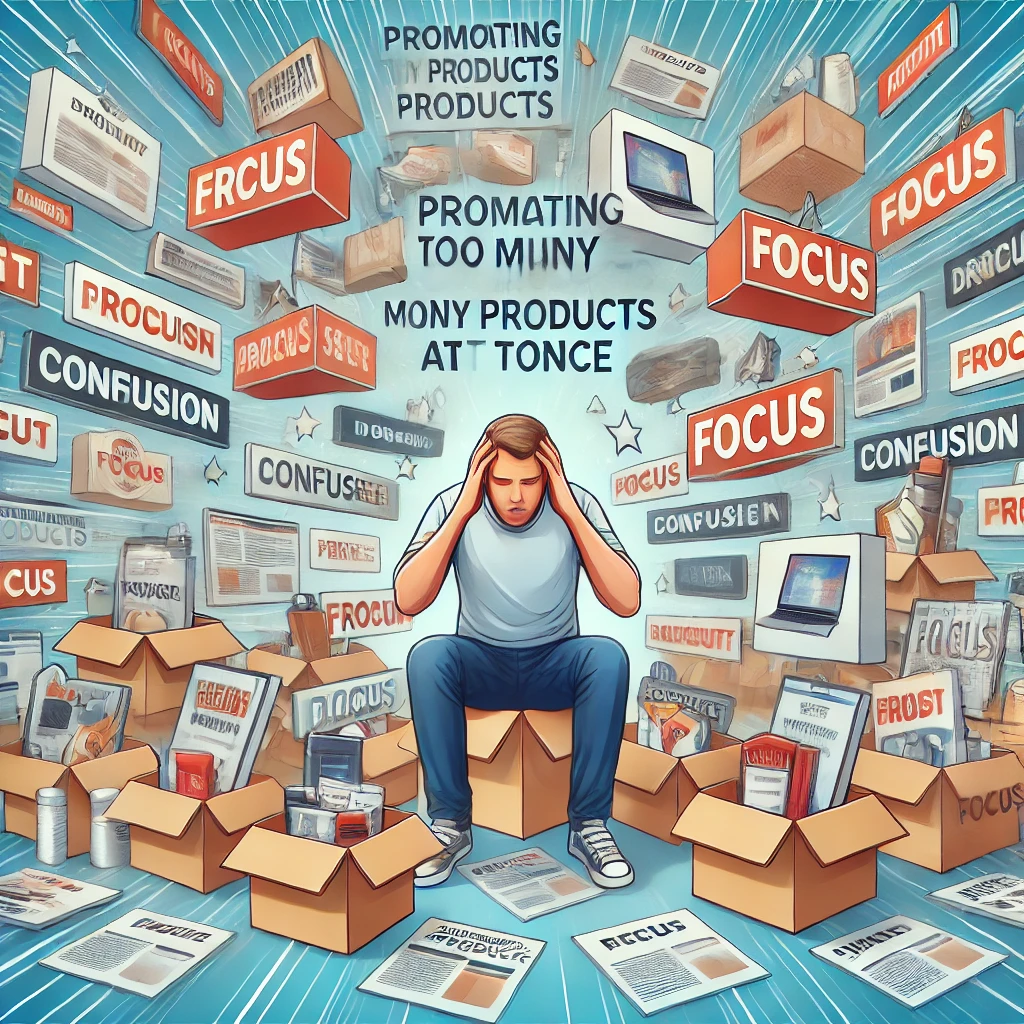Affiliate marketing is a powerful way to earn money online — but only if done right. Whether you’re a beginner looking for your first big win or a seasoned marketer aiming to maximize profits, there are common mistakes that can derail your progress. Fortunately, knowing what to avoid can help you fast-track your success.
In this post, I’ll guide you through the most common affiliate marketing pitfalls and give actionable strategies to sidestep them. Let’s get started!
1. Choosing the Wrong Niche
One of the first and biggest decisions you’ll make as an affiliate marketer is choosing your niche. It can be tempting to jump into a popular niche like fitness or tech gadgets just because it’s trending or seems profitable. However, without genuine interest or knowledge, it’s tough to create valuable, engaging content that stands out.
Why the Right Niche Matters:

- Content creation becomes easier when you’re passionate about the subject.
- Your audience can tell when you know what you’re talking about — or when you’re just faking it.
- You’ll be motivated to stay consistent over time, which is key to building a successful affiliate business.
How to Choose a Profitable Niche:
- Follow Your Passion: Think about topics you naturally enjoy reading, talking, or learning about.
- Research Demand: Use tools like Google Trends, Ahrefs, or Ubersuggest to identify whether there’s a steady search interest.
- Evaluate Competition: Check if the niche is overcrowded. While competition signals demand, overly saturated markets may make it harder to stand out.
Real-Life Lesson:
Sarah, a new affiliate marketer, initially chose the fitness niche because it was trending. Without personal experience or knowledge, her content felt forced, and engagement was low. After pivoting to skincare for sensitive skin — a topic she was passionate about — Sarah saw a 300% increase in site traffic within six months.
Key Takeaway: Choose a niche you care about, but balance passion with market demand.
2. Ignoring SEO and Organic Traffic Strategies

Many beginners think that affiliate marketing success comes solely from paid ads or social media promotions. The problem? These strategies can be expensive and unpredictable.
SEO (Search Engine Optimization) provides a more sustainable approach. By creating optimized content, you can attract steady, organic traffic without constantly paying for ads.
Best SEO Practices for Affiliates:
- Keyword Research: Use tools like Semrush, Ahrefs, or Keywords Everywhere to find search terms relevant to your niche.
- On-Page SEO: Optimize your content with target keywords, meta descriptions, and proper heading structures.
- Create Evergreen Content: Focus on topics that will remain relevant for years, such as “Best Laptops for Remote Work.”
Real-World Example:
A tech blogger struggled to get traffic for months until he optimized his posts with SEO strategies like internal linking, improved keyword placement, and meta tags. Six months later, his organic traffic tripled.
Pro Tip: SEO isn’t a one-time effort. Continuously monitor your site’s performance and make updates as needed.
3. Promoting Too Many Products at Once
Trying to promote every product under the sun is a classic rookie mistake. It not only confuses your audience but also dilutes your credibility.
Why Focus Matters:
- Builds trust by positioning you as an expert on a specific solution.
- Encourages better engagement through detailed, valuable content.
- Simplifies your content creation process.

What to Do Instead:
- Choose a handful of high-quality products to promote.
- Test and use the products personally whenever possible.
- Write in-depth, honest reviews that highlight both pros and cons.
Case Study Suggestion:
Imagine reviewing just one high-quality digital marketing tool over 90 days. By creating step-by-step tutorials, FAQs, and case studies, you can position yourself as the go-to expert on that product.
Pro Tip: Focus on complementary products that fit your audience’s needs. For instance, if you’re in the home office niche, review laptops, ergonomic chairs, and productivity tools.
4. Not Building an Email List
If you’re not building an email list, you’re leaving money on the table. Unlike social media, where algorithm changes can slash your reach overnight, your email list is a direct, reliable communication channel with your audience.
Why Email Marketing Matters:
- It’s personal and builds stronger relationships.
- Email marketing has one of the highest ROI (return on investment) rates.
- You can provide exclusive offers and valuable content directly to subscribers.

Getting Started:
- Create a Lead Magnet: Offer something valuable like a free guide, checklist, or mini-course.
- Use Reliable Email Platforms: Try Convert Kit, Mailchimp, or Active Campaign.
- Nurture Relationships: Don’t just sell; share useful tips and insights.
Example Success Story:
One marketer saw a 45% increase in conversions after launching a simple “5-Day Free Affiliate Marketing Crash Course” delivered via email.
Pro Tip: Test your subject lines to improve open rates. Short, benefit-driven headlines tend to work best.
5. Lack of Consistent Content Creation
Consistency is the name of the game in affiliate marketing. Posting content sporadically or abandoning your platform for weeks at a time can hurt engagement and search rankings.

Why Consistency is Key:
- Builds audience trust and loyalty.
- Helps search engines recognize your site as a valuable resource.
- Keeps you ahead of competitors.
Content Creation Tips:
- Create a Content Calendar: Plan your posts weekly or monthly to stay organized.
- Mix Content Formats: Include product reviews, how-to guides, comparison posts, and case studies.
- Repurpose Content: Turn blog posts into videos, infographics, or social media snippets.
Example:
A YouTuber struggling with growth decided to commit to posting every Tuesday and Friday. Over time, viewers started anticipating his uploads, leading to a spike in subscribers and engagement.
Pro Tip: Set realistic goals. Even one well-researched post per week can make a difference.
Visuals and Media Suggestions
- Infographics: Visual summaries of “Top Affiliate Marketing Mistakes” for easy sharing.
- Before-and-After Graphs: Show improvements after applying SEO strategies.
- Case Study Videos: Short interviews with successful marketers who overcame common pitfalls.
- Screenshots: Walkthroughs of using email marketing tools or keyword research platforms.
Conclusion
Avoiding these common affiliate marketing mistakes can save you countless headaches and wasted effort. By choosing the right niche, leveraging SEO, promoting selectively, building an email list, and staying consistent with content creation, you’ll be on your way to long-term success.
Action Step:
Take a moment to reflect on which of these mistakes you’re currently making. Write down one action step you can take today to fix it — and start building a more profitable affiliate business.








